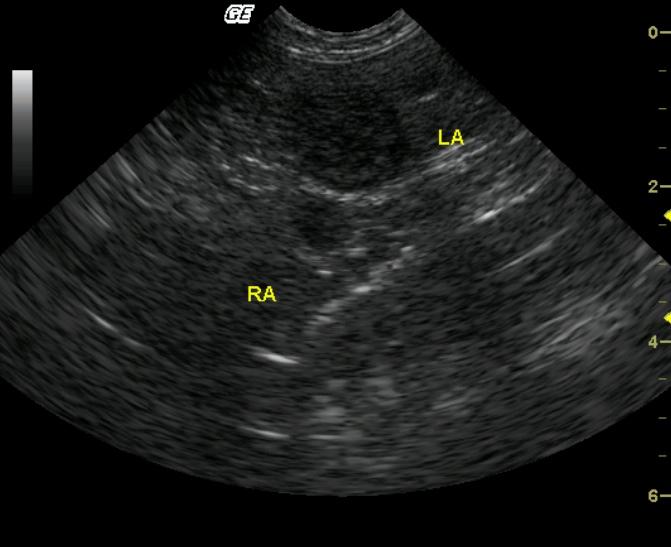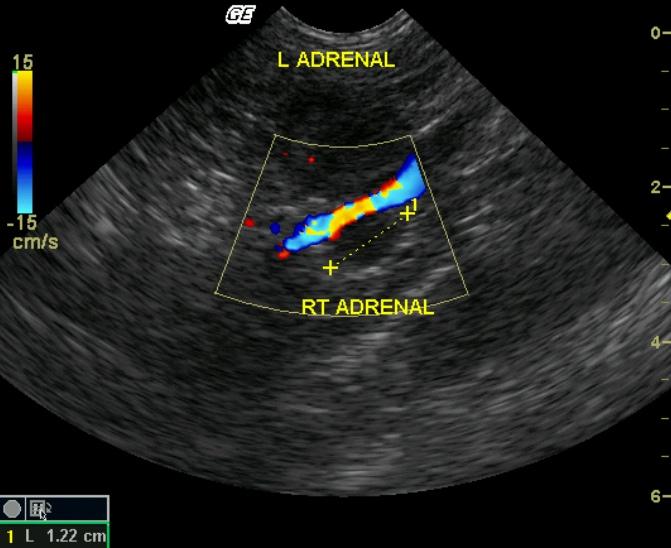A 15-year-old FS DSH with was presented for the evaluation of intermittent vomiting. Blood work performed by the referring veterinarian showed a persistent thrombocytopenia and a progression of the severity of azotemia over a period of several months. A grade I/VI heart murmur was found on physical examination. Blood work was repeated and revealed hypoalbuminemia, hyperamylasemia, hypercalcemia and hypernatremia. The CBC showed a thrombocytopenia and monocytosis. The urinalysis showed a low specific gravity, mild proteinuria, and hematuria.
A 15-year-old FS DSH with was presented for the evaluation of intermittent vomiting. Blood work performed by the referring veterinarian showed a persistent thrombocytopenia and a progression of the severity of azotemia over a period of several months. A grade I/VI heart murmur was found on physical examination. Blood work was repeated and revealed hypoalbuminemia, hyperamylasemia, hypercalcemia and hypernatremia. The CBC showed a thrombocytopenia and monocytosis. The urinalysis showed a low specific gravity, mild proteinuria, and hematuria.
Hyperaldosteronism secondary to an adrenal mass (carcinoma or adenoma,) pheochromocytoma, protein losing nephropathy due to neoplasia (lymphoma.)
Adrenocortical carcinoma with venous invasion.
There appears to be a left adrenal mass which is wrapping around the aorta, however this could also be a primary mass with adjacent lymphadenopathy. Carcinoma most likely, but a pheochromocytoma is also possible.
Three radiographic views of the thorax did not show signs of metastases. A left adrenalectomy was performed and complete excision of the mass was achieved. Initially, the patient did well post-operatively, however, she soon developed sunken eyes and extremely pale to white mucous membranes. Supportive care and blood transfusion allowed for clinical stabilization of the patient. Blood chemistry revealed hypoalbuminemia, low ALT, azotemia, hyperglycemia, hypernatremia, and hypokalemia. The CBC showed lymphopenia, monocytosis, neutrophilia, eosinophilia, and basophilia, in addition to a decreased hematocrit, and thrombocytopenia. CBC values slowly improved over the course of about eight weeks. Two months later, the patient was still azotemic with a high ALT, hypernatremia, and hyperamylasemia. CBC was now within normal limits. A consult with an oncologist yielded no effective chemotherapy protocols for this type of cancer. The patient was euthanized almost one year after the tumor had been originally discovered by ultrasound.


